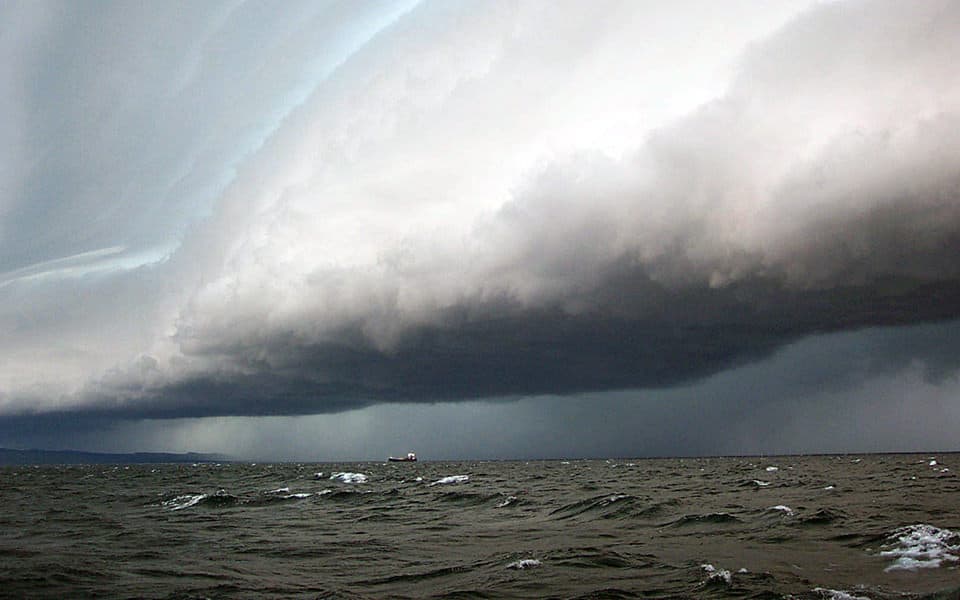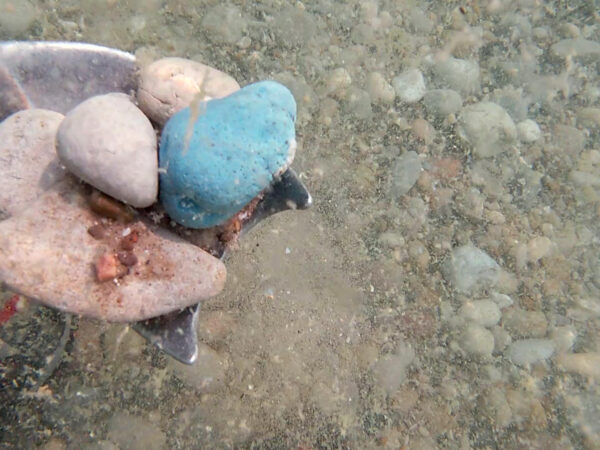
This article was republished here with permission from Great Lakes Echo.
By Brandon Chew, Great Lakes Echo
It was atmospheric pressure waves that produced 6-foot water waves in Lake Michigan on April 13, 2018, damaging docks and cottages and submerging breakwalls in Ludington.
The event is the first documented meteotsunami in the Great Lakes and provides an opportunity for scientists to better understand and forecast these events, according to a study recently published in the print version of the journal Natural Hazards.
Meteotsunami is short for a meteorological tsunami. While most tsunamis are caused by seismic activity, meteotsunamis are caused by rapid changes in air pressure, usually as the result of severe thunderstorms.
“Meteotsunamis happen in every Great Lake and they can happen (roughly) 100 times per year,” said Eric Anderson, the study’s lead author and a scientist with the National Oceanic and Atmospheric Association’s Great Lakes Environmental Research Laboratory.
“Almost all of those are insignificant in the sense that they’re not causing much damage and generally not leading to injury or death,” he said. “We see a storm that can cause injury or death every few years.”
Despite their frequency, Great Lakes meteotsunamis are rarely documented since they usually last less than 15 minutes. This one was larger than typical and lasted long enough for people to document with video.
It was caused by atmospheric pressure waves that started somewhere in the Midwest and traveled east over Lake Michigan, Anderson said.
“These are like ripples in the air, not dissimilar to where if you drop a stone in a pond, it creates ripples that radiate out from that point in the atmosphere,” he said.
While this meteotsunami did not cause any deaths or injuries, it very well could have, had it occurred during the summer and not early spring, Anderson said.
“If this exact storm hits in July, it probably leads to a number of fatalities because it basically swamped the breakwall, and if you can picture the Ludington breakwall, in the summertime there can be 50 to 100 people on that.”
The southern region of the Great Lakes is especially prone to meteotsunamis due to the water’s shallower depth.
Atmospheric pressure waves have to be moving at roughly the same speed as the water waves below them to efficiently pass that energy down in the water and create a meteotsunami, Anderson said.
Meteotsunamis occur year round in the Great Lakes, but generally peak in April and May, he said.
Researchers are trying to figure out if climate change will increase the number of meteotsunamis in the summer. Scientists in Croatia are researching climate change’s effect on meteotsunamis.
“What they’ve shown is it’s unlikely that you’ll see meteotsunami intensity increase, meaning bigger waves, but that you might see more meteotsunamis happening in the summertime,” Anderson said.
More research is needed to determine if meteotsunamis will become more frequent in the summer due to climate change, he said.
Meteotsunamis also threaten the ecosystem by increasing erosion and releasing contaminants within sediments.
“There are buried contaminants in the sediments, ‘legacy contaminants,’ that we have in a lot of places in the Great Lakes,” Anderson said. “Meteotsunamis are, in some cases, the primary driver of the erosion of sediments and possibly the resuspension of these contaminants.”
The National Oceanic and Atmospheric Association is working on ways to warn the public when weather presents the possibility of a meteotsunami, similar to a tornado warning, Anderson said.
Meteotsunamis can seem less dangerous to people who are unaware of these events, as they can appear to be flash flooding events and not tsunamis.
“This doesn’t look like the Hollywood tsunami movie poster image of this giant wave coming in and crashing,” Anderson said. “What it will look like is more like a rapid flood (that lasts) for 10 or 20 minutes.”
“If you see this rapid change in water level, whether it’s a meteotsunami or not, the best bet is to back away from the beach and wait for it to pass.”
Catch more news on Great Lakes Now:
Flooding Tells ‘Two Different Stories’ In Michigan
Native Rights: Where Great Lakes Tribes can fish and how much is up for debate
API key not valid. Please pass a valid API key.Featured image: Storm clouds loom over Lake Superior. (Photo Credit: National Oceanic and Atmospheric Administration)




